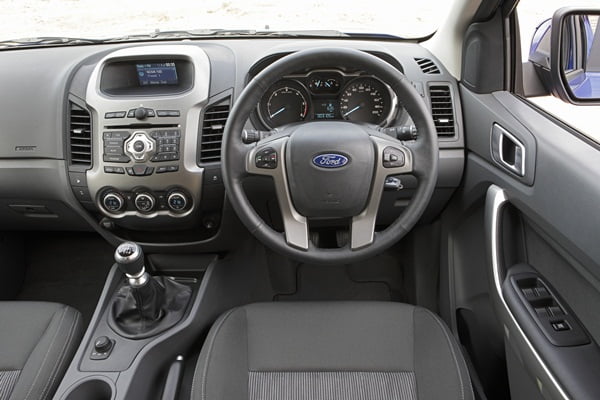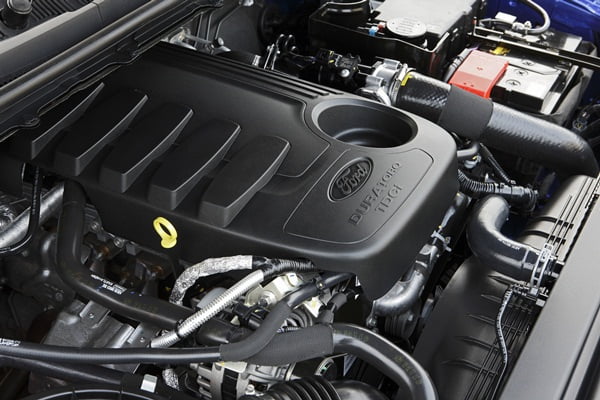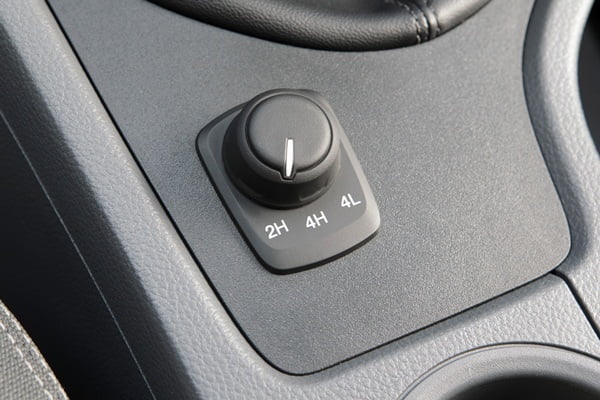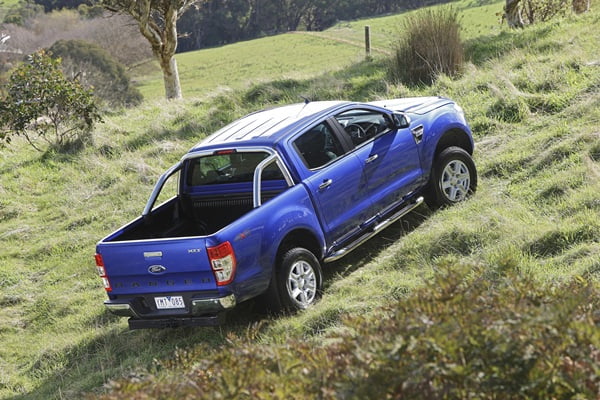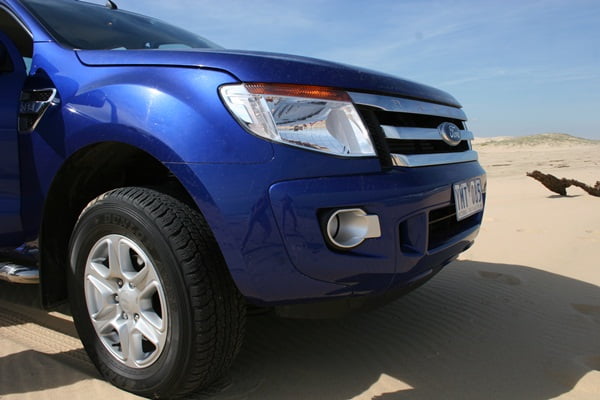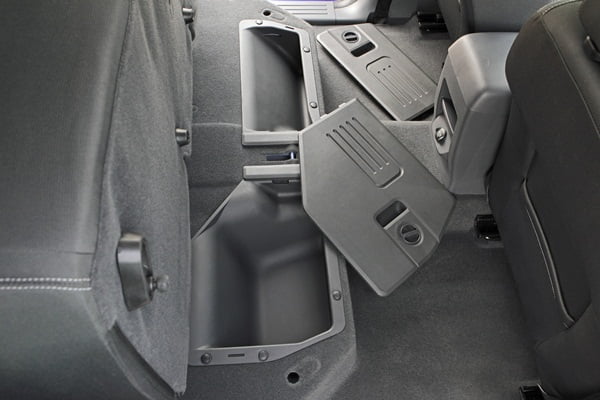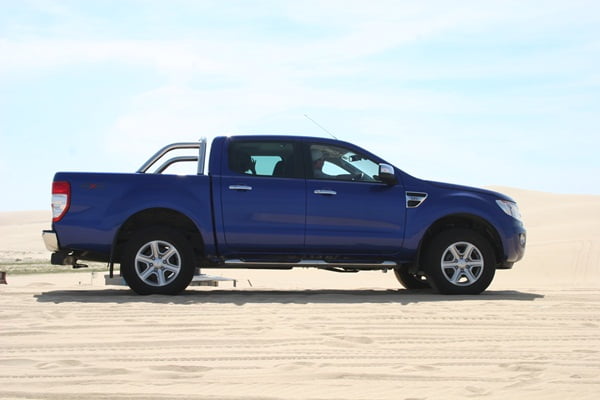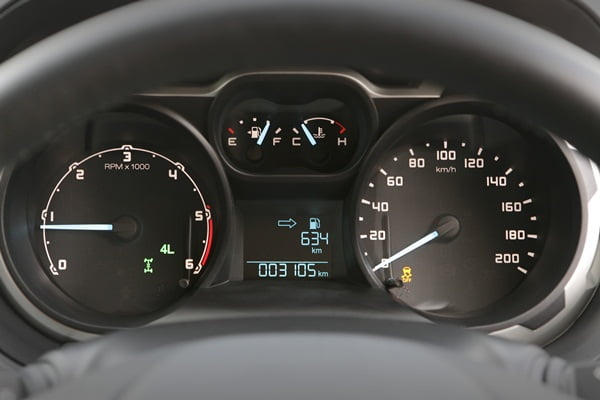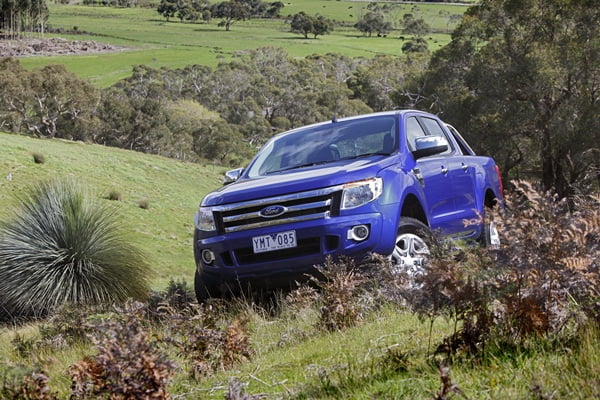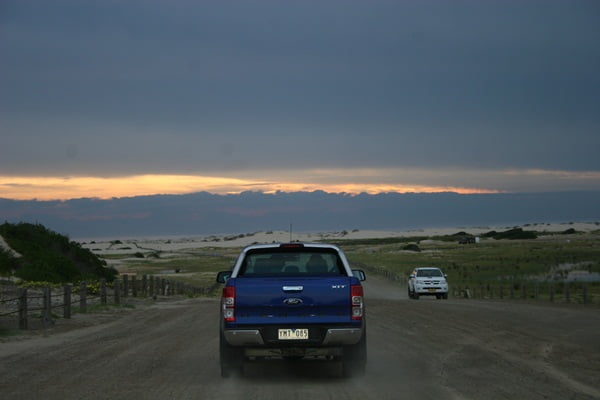2012 Ford Ranger – Every few years an auto manufacturer comes up with something that is a game changer, its bigger and better and it suddenly changes the game and has the other manufacturers feeling bloody awful.
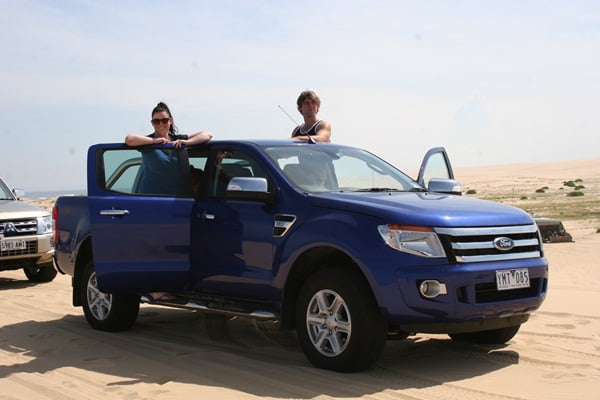
In 1992 it was the Isuzu D-Max (and its closely related Colorado). In 1994 it was the Toyota HiLux; in 1995 it was the Nissan Navara and Triton.
So since then apart from facelifts, we’ve had a bit of a wait for something that offered a marked improvement. VW made a big song and dance about its Amarok, that’s a nice truck, but underpowered.
Isuzu and GM have been busy with new versions of the D-Max and Colorado, soon to be on Australian roads. But the biggest news has been from Ford in the form of the all new Ford Ranger, which is actually completely new from bumper to bumper with not a single part carried over from the old Ranger. It’s simply Brilliant.

Behind the wheel
The second you climb into the XLT cab you relies that this is a nice place to be, Ranger’s interior is both well-designed and well put-together. The cabin has been stretched to provide a spacious and comfortable feel. Up front, drivers get a commanding view of the road and off-road obstacles, thanks to the high seating position in all front seats. The centre section of the console has been purposefully designed to integrate the centrally mounted screen, audio functions and controls for the air conditioning system. A new, lever-style parking brake and a smaller adjustable steering wheel further reinforce the car-like feel of the interior. A lot of the switchgear and steering wheel look very familiar and there is a fair likelihood they could be borrowed from the Fiesta and Focus.
Performance
To drive, the 3.2 manual at first feels a bit big and unpolished, but it’s certainly powerful and the 6-speed gearshift initially feels a little rubbery but changes positively when you get the hang of it. It isn’t however the class act as the auto box. It’s a shame really, as everything about this rig is brilliant except the manual box, it’s good but not brilliant. Ride quality is great, considering that, like all trucks its rear end is leaf sprung. Switching to 4WD, which you can do on the move at up to 120kmh, it’s also very relaxed. That 470Nm torque from a lazy 1,500 – 2,750rpm allows a lazy 60kph per 1,000rpm in 6th. So on the motorway you’ll be cruising at less than 2,000rpm.
Off road, this rig is extremely capable, we recently tested the Ranger vs. Triton V’s Pajero, just to get a handle on its ability off-road, and let me say it made the others look pretty ordinary. If you fitted more specialist tyres rather than the road tyres our truck was fitted with it will take you places you really shouldn’t go.
Handling
Up front, the torsion spring suspension has been replaced by a new coil-over-strut suspension that allows for better tuning of the upper and lower wishbone design. The new rear leaf spring suspension system also provides a smooth, firm and comfortable ride without diluting the payload capacity. Because the Ranger was primarily developed in Australia, rack and pinion steering and a class leading chassis was the order of the day, giving the Ranger a more car like handling rather than a commercial Ute. On the winding road through Galston Gorge just out of Sydney you can attack the road, confident that if things get a bit out of hand, an array of electronic safety technology jumps in and helps maintain control at all times, even in slippery conditions.
2012 Ford Ranger Comfort
With a completely new interior design, the Ranger offers a contemporary look and feel with features and comfort normally found only in passenger cars. The bold graphics of the interior surfaces are finished with materials that will stand up to the demands of a workhorse while delivering a lasting quality appearance.
Making full use of the spacious interior, the Ranger Double Cab offers 23 storage spaces in the cabin – more practical stowage than any competitor. Its deep centre console bin is the biggest in its class at 8.5 litres and can keep up to six cans of drink cool in models with a duct from the air-conditioner.
The glove box is large enough to accommodate a 16-inch laptop computer while door pockets can comfortably fit 1.5-litre water bottles. Ample storage for mobile phones and other small items can be found in the console and in areas within easy reach of the driver.
Underneath the rear seats, a convenient hidden storage area for tools can easily be accessed. Three passengers can easily fit in the second row of the cabin, and offers ample knee room and better foot clearance between the B-pillar and the seat. This means that getting in and out of the new Ranger is easier than ever for rear-seat passengers. The all-new Ford Ranger is just as much at home on a family trip as it is delivering goods to a construction site, and the new model redefines the level of comfort, technology and safety that customers can expect from a hard-working Ute.
2012 Ford Ranger Practicality
The Ranger seats 5 in comfort as mentioned earlier, but you buy a dual cab for the practicality offered by the rear box. In terms of space for loads, the Dual Cab has a deeper load box and increased length and width resulting in outstanding cargo capacity with 1.21 cubic metres. For example, the cargo box of the new Dual Cab is more than 100mm wider than before – 1,549mm long by 511mm high and with a maximum cargo width of 1,560mm.
Width between the wheel arches is 1,139mm on all models, which if anything is a let down, the Ranger tray falls just short of fitting a forklift pallet, something other competitors have made sure their utes could handle however special provisions are provided in the cargo box to place timber inserts in pockets that are located above the wheel arch.
This allows plywood or sheet rock to be stacked flat. Width at the rear tailgate opening, at the top of the box, is 1,330mm. The new Ranger can also haul exceptionally heavy loads, with a towing capacity ranging up to a best-in-class 3,350kg, and an outstanding payload capacity of over a Ton.
2012 Ford Ranger Equipment
The list of standard and optional equipment is extensive and you would be well advised to check out the Ford website for your particular models features. However all models come fitted with the Bluetooth Voice Control system, allowing drivers to operate their mobile phone and audio system. On select models, other features include a climate control using voice-activated commands – all wirelessly. The voice control buttons are located on the steering wheel and are conveniently accessed when driving, leaving the drivers free to keep their eyes on the road and their hands on the wheel. Voice commands are detected by a microphone housed in the cab. The driver can easily make or take phone calls and access their mobile’s phone book and calling history.
The system can also record voice tags for favourite numbers. In the same way, the driver has effortless control over the radio, CD player, iPod2 and other external devices via the USB port. It is also possible to stream audio from the mobile phone. Ranger’s integrated audio system is an integral and unique part of the centre dashboard, effectively deterring theft. The Human Machine Interface on the central control panel is inspired by the latest communication devices, with a joy stick as a central control element and a soft feel number pad to enter phone numbers. Integrated with the audio system, and to further improve interior comfort, the new-to-Ranger dual-zone climate control fitted to the XLT and it allows the driver and passenger to set separate temperature settings.
2012 Ford Ranger Safety
All-new Ranger is the first-ever Ute to receive the maximum 5 star Euro NCAP rating. New to Ranger, all Australian models are equipped with Dynamic Stability Control (DSC) which uses advanced sensors to continuously monitor the path the vehicle is travelling on and compares it to the path the driver wants to follow, as indicated by the steering wheel. Integrated into DSC are other new control features new to Ranger that assist vehicle stability and control such as:
- Hill Descent Control: Helps the driver on steep downhill grades
- Hill Launch Assist: Helps the driver pull away on steep climbs
- Trailer Sway Control: Provides stability control when towing a trailer
- Adaptive Load Control: Optimal vehicle stability with a loaded vehicle
- Emergency Brake Assist: Provides additional brake pressure in emergency stopping manoeuvres
- Emergency Brake Light: Signals to other drivers by flashing the indicators when the vehicle decelerates quickly
- Roll-Over Mitigation: Helps prevent the vehicle getting into a roll-over situation
Ranger also offers new passive safety technologies, with the availability and array of airbags dependent on the model. Side curtain airbags are available on all cab styles for the first time. These airbags deploy from the headliner to provide a protective cushion for the head of outboard occupants in the event of a side impact. The curtain is designed to protect both rows of occupants by covering the upper side structure and glass from the A-pillar to the C-pillar.
Also available are newly designed side thorax airbags which deploy from the driver and front passenger seat. (bucket seats only; not available on front bench seat). Further cushioning the impact and reducing the crash forces experienced by occupants in the front seats. All new frontal impact airbags are available for the driver and passenger, along with seatbelt pretensioners and load limiters.
2012 Ford Ranger Summary
The all-new Ranger is a very capable and composed vehicle both on- and off-road. It has been designed as a global vehicle and combines the best of all worlds
- exceptional safety,
- outstanding fuel economy,
- contemporary styling,
- interior comfort,
- cutting edge technologies,
- and class-leading towing and payload capabilities
All in a one-tonne package that fits in perfectly with the needs of the trades and the family weekend warriors. There are plenty of competitors in this segment.
But they lack one or more of the following they are
- less safe,
- less power,
- less torque,
- less standard equipment,
- less towing capability,
- less load carrying capability,
- less room in the rear,
- no auto,
- no air bags in rear, etc.
As an overall package I just can’t find a competitor that lay a hand on it.
What is good and not so good?
What is good?
- • Progressive styling
• Brilliant engine
• Ride and handling
• Comfort
• Interior Space
• Towing capacity
What’s not so good?
- • Manual box shift could be better
• Steering Wheel that only adjusts for rake not reach
• Short of side bolstering in front seats
• Can’t accommodate full size pallet in rear box
Vehicle: 2012 FORD RANGER XL AND XLT DUAL-CAB 4WD $55,390
Drive train: 3.2-litre, 5-cylinder common-rail direct-injection turbo diesel, 6-speed manual, four-wheel drive
Power and Torque: 147kW/470Nm
Safety: 5 (Euro NCAP)
CO2 Emissions g/km: 222 g/km
Green Vehicle Guide Rating: 2-1/2
Fuel Economy L/100km (ADR comb): 8.4 L/100km
Tow Capacity: 3350kg
Tow Ball Rating: NA
Warranty: 3-years/100,000km
AnyAuto Ratings: 82/100
Behind the Wheel 8
Practicality 9
Comfort 8
Fit for Purpose 9
Equipment 8
Value for Money 8
Performance 8
Build Quality 8
Ride & Handling 9
Environment 7

